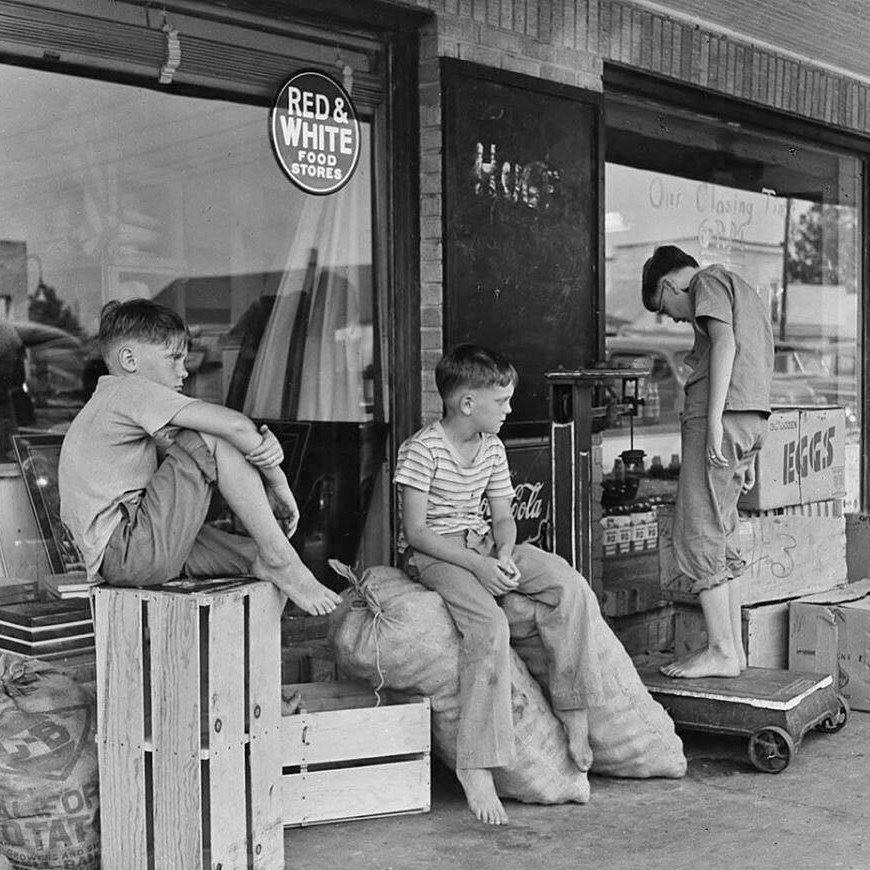
United States Boys' Clothes Chronology: War and Post-War Years--Demographics

Figure 1.--The photo was taken in 1945, on a Saturday afternoon, in Tomball, Harris County, Texas. Notice the boys are not wearing overalls. At the time Tomball was a typical small town in east Texas, north of Houston. Notice the scale the boy is standing on. That is for selling to farmers. Tomball now it has been enveloped by the huge prosperous Houston metropolitan area. Red and White was a way that small independent grocery stores could compete with the growing number of chain stores.
|
|
Before America entered World War II (1941-45), there were substantial differences between North and South and between urban and rural America. This gap had begun to close before the War as people in the major cities began to move into the suburbs. People in rural areas began moving into the big industrial cities. Blacks in the rural South joined into this migration. School portraits are a good source of informtion as they are often dated and the locations are indicated. We still see small rural schools in the 1930s with chuldren wearing overalls and going barefoot. The war accelerated the processes that were reshaping America and removing demographic differences. American began mobilizing for War in a small way has Hitler and Stalin launced the War (September 1939). Factories closed by the Depression were opened and expanded and new factiries built. There was no longer an unemployment problem. As a result of the War, there was now a labor shortage. And along with this process we see the rural/urban divide and the North south divide rapidly disappearing. Everyone had the mobey to provide stylish clothing. There were some shortages, but nlothing like Europe. After the War wiyh a brrief recession we see large numbers of Americans entering the middle-class and chieving the merican dream. There was a vast movement into the suburbs that expanded out from the cities. By the 1950s, childten can no longer be identified by how they dressed. Children in urban and rural areas dressed alike. Earlier families might have similar dressup cloyhimg, but by the 1950s increasinly common casualwear was also identical. Here telvesion was a actor. No matter where you lived in the United States, families received the same visual images in their livingrooms.
HBC

Navigate the Boys' Historical Clothing Web Site:
[Return to the Main American post-War years chronology]
[Return to the Main U.S. early 20th century garment page]
[Return to the Main U.S. Country Page]
[Introduction]
[Activities]
[Biographies]
[Chronology]
[Clothing styles]
[Countries]
[Bibliographies]
[Contributions]
[FAQs]
[Glossaries]
[Images]
[Links]
[Registration]
[Tools]
[Boys' Clothing Home]
Created: 4:49 AM 7/4/2016
Last updated: 4:49 AM 7/4/2016



